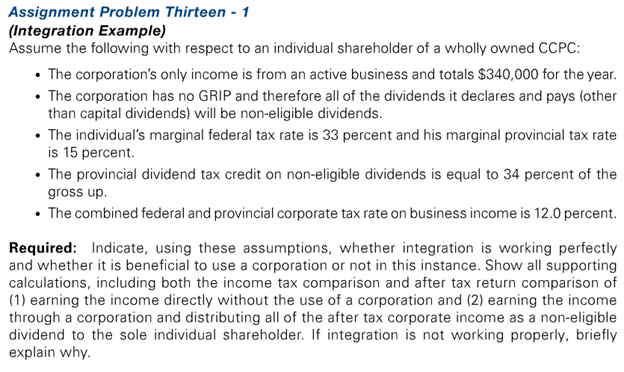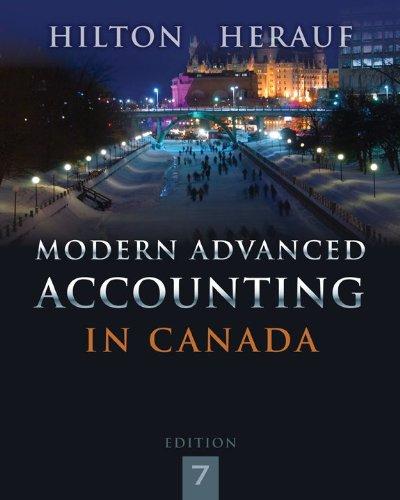
Assignment Problem Thirteen - 1 (Integration Example) Assume the following with respect to an individual shareholder of a wholly owned CCPC: The corporation's only income is from an active business and totals $340,000 for the year. The corporation has no GRIP and therefore all of the dividends it declares and pays (other than capital dividends) will be non-eligible dividends. The individual's marginal federal tax rate is 33 percent and his marginal provincial tax rate is 15 percent. The provincial dividend tax credit on non-eligible dividends is equal to 34 percent of the gross up. The combined federal and provincial corporate tax rate on business income is 12.0 percent. Required: Indicate, using these assumptions, whether integration is working perfectly and whether it is beneficial to use a corporation or not in this instance. Show all supporting calculations, including both the income tax comparison and after tax return comparison of (1) earning the income directly without the use of a corporation and (2) earning the income through a corporation and distributing all of the after tax corporate income as a non-eligible dividend to the sole individual shareholder. If integration is not working properly, briefly explain why. Assignment Problem Thirteen - 1 (Integration Example) Assume the following with respect to an individual shareholder of a wholly owned CCPC: The corporation's only income is from an active business and totals $340,000 for the year. The corporation has no GRIP and therefore all of the dividends it declares and pays (other than capital dividends) will be non-eligible dividends. The individual's marginal federal tax rate is 33 percent and his marginal provincial tax rate is 15 percent. The provincial dividend tax credit on non-eligible dividends is equal to 34 percent of the gross up. The combined federal and provincial corporate tax rate on business income is 12.0 percent. Required: Indicate, using these assumptions, whether integration is working perfectly and whether it is beneficial to use a corporation or not in this instance. Show all supporting calculations, including both the income tax comparison and after tax return comparison of (1) earning the income directly without the use of a corporation and (2) earning the income through a corporation and distributing all of the after tax corporate income as a non-eligible dividend to the sole individual shareholder. If integration is not working properly, briefly explain why







